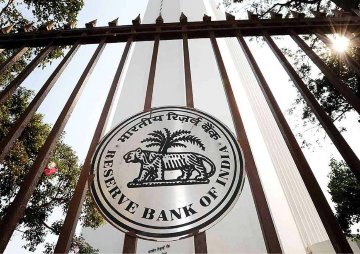"Prime Minister Narendra Modi's visits out of New Delhi last week have emphasised the new government's understanding of India's Grand Strategy.
In some ways, it marks a continuity with the policy of past governments, but in important ways it presages a departure.
The visits - to commission the INS Vikramaditya in Karwar and to the kingdom of Bhutan - are connected through an understanding of that strategy.
It has three elements: the need for India to live in conditions of peace and stability in which economic growth can take place and make the life of every Indian better; the importance of establishing India's primacy in its own neighbourhood before making extra-regional commitments; and third, and most important in the current context of flux in the world order - anchoring Indian Foreign Policy in a strong national security posture.
Indigenisation
In his remarks at the function, Modi not only called on the Navy to fulfil its traditional role in keeping sea lanes open to commerce, but also promote self-reliance and indigenisation in the defence manufacturing sector.
It may be recalled that as Chief Minister of Gujarat Modi has long supported indigenisation and has even offered Gujarat as a platform for defence R&D and manufacturing.
Significantly, Modi added that Indian-made arms and equipment "should also serve as protectors for small nations across the world."
In other words, India must emerge as a net security provider in its immediate region.
As a former Chief Minister of Gujarat, Modi is also familiar with other things maritime and has self-consciously promoted manufacturing based on SEZ's close to ports.
Gujarat's coastline of 1600kms is the longest among Indian states. It also hosts ports, such as Kandla, Mundra, Dahej, as well as smaller ones like Pipavav, Jakhau, Porbander and so on.
Gujarat has also been a pioneer in encouraging industry based on proximity to sea lanes of communications, such as the Jamnagar oil refinery.
If the visit to Bhutan seemed a puzzle, take out a map of India and see it again. Bhutan lies adjacent to two of the most sensitive parts of the country - the Siliguri corridor and the Chumbi Valley.
The former is the narrow neck of Indian territory that lies between Nepal and Bangladesh, with Bhutan on its northwest. It is just about 35km wide at its narrowest point.
The Chumbi Valley is that part of Tibet that lies between Sikkim and Bhutan and is proximate to the Siliguri Corridor.
China has claims with Bhutan on its eastern, central and western flanks and the two countries have undertaken over 20 rounds of talks to resolve their differences.
In terms of bare bones, the Navy's 2009 maritime doctrine describes as areas of "primary interest" the immediate waters around India, the littoral reaches of the Arabian Sea and Bay of Bengal, the straits leading into the Indian Ocean and the sea lanes that criss-cross it.
Strategy
From the purely military point of view, a maritime strategy involves four elements - sea control, power projection ashore, presence and strategic deterrence.
As long as I have spoken to Indian Navy leaders, I have heard the word "balanced Navy" for their vision what the Navy should be all about. Which means a Navy which can exercise sea control through fleets built around aircraft carriers.
Power projection involves the ability to use the sea to make strikes on targets of coastal or land-locked straits as well as in physically taking control of choke points.
The emphasis is on building all four elements of maritime strategy. As the record will show, with mixed results.
India's inefficient public-sector navy yards are unable to keep up to the required pace of construction - the time they take to build a warship is sometimes three or four times longer than those of comparable yards abroad.
For example, most modern Shivalik class, which were contracted to be built within 60 months, took 112 months to be built.
The Scorpene submarine which was to be delivered in 2012 will start arriving in 2016. In the meantime, two of ten Kilo-class submarines we had acquired from Russia are out of commission.
A project to acquire a new class of 75I submarines has been hanging fire for the past decade. The first Indian designed aircraft carrier - the new Vikrant - has been delayed till 2018.
Ironically, India has a number of private sector yards dying to get into business - Pipavav Defence Systems, L&T, ABG shipyards and so on - but they are given the crumbs of the table of naval construction because of an indifferent attitude of an alliance of bureaucrats and public sector unions.
Reassertion
As for presence, India is reasonably well off in the Indian Ocean. It has helped countries like Mauritius, Seychelles and Mozambique in maintaining security. It has a strategic presence in Maldives and Madagascar and ties with almost all the littoral countries.
Presence is important in maritime strategy. But to consolidate yourself, you need something more - a flourishing economy, maritime assets like ports and merchant ships, an open trading system and secure sea lanes.
China is using economic, military and diplomatic tools to gain influence over coastal states and small islands in the Indian Ocean and is using its investments and aid to consolidate its strategic positions and secure the approaches to these positions.
In his initial visits and statements, Modi's footing has been quite sure and firm. The Indian Ocean is as important as the subcontinental land mass for India's security and well being. To secure both, the government has an agenda of reform and restructuring that are needed to enable India to emerge as a security provider for its smaller neighbours.
(The writer is a Contributing Editor, Mail Today and a Distinguished Fellow, Observer Research Foundation, Delhi) "
The views expressed above belong to the author(s). ORF research and analyses now available on Telegram! Click here to access our curated content — blogs, longforms and interviews.




 PREV
PREV


